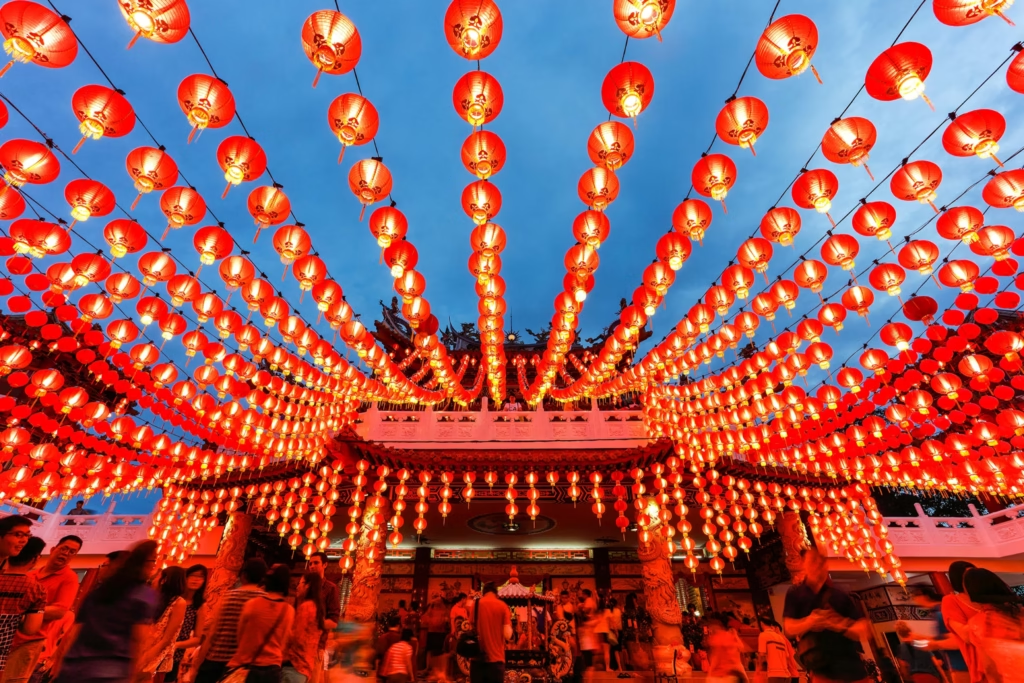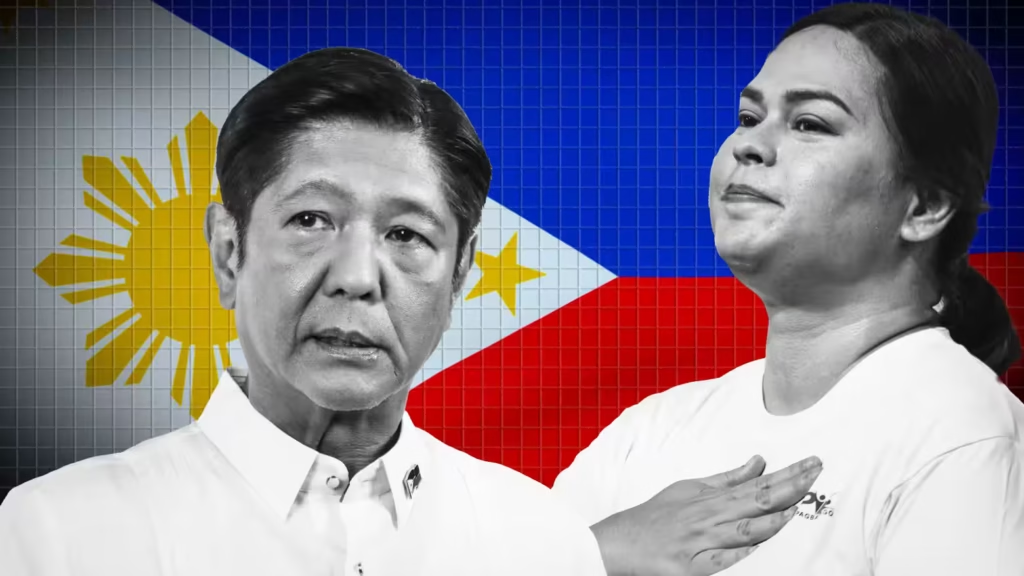With the Chinese Lunar New Year fast approaching on January 29, 2025, and the United States entering a new administration under President Donald Trump, global dynamics are shifting in real time. Against this backdrop, we’re taking a closer look at the Overseas Chinese—communities whose economic and political influence spans Southeast Asia. In this series, we’ll explore their roots, their remarkable rise to power, and what their story means for our evolving world today.

Table of Contents
I. The Rise of the Overseas Chinese in Southeast Asia
1. Southeast Asia’s economy is effectively dominated by ethnic Chinese communities.
2. The proportion of ethnic Chinese in each Southeast Asian country goes in this order: Singapore 70% > Malaysia 25% > Thailand 10% > Indonesia 4% > the Philippines 1.5%.

3. In both Singapore—where Chinese make up 70%—and the Philippines—where they are just 1.5%—ethnic Chinese still account for over 50% of the local economy.
4. Most of the ethnic Chinese in Southeast Asia came from southern Chinese provinces like Guangdong and Fujian.

5. Many of these migrants were poor tenant farmers who placed a high value on owning land.
6. As soon as they had extra money, they tended to invest in real estate.
7. Until the 19th century, tropical waterborne diseases kept population growth low in Southeast Asia.
8. Once vaccines were developed to contain deadly illnesses like malaria and yellow fever, populations in the region began to rise rapidly.
9. With a rapid population increase in limited areas, real estate prices skyrocketed, causing ethnic Chinese property owners to see their assets soar in value.
II. Colonialism and Early Migration (Singapore)
10. Whenever something happens somewhere in the world, you can usually bet the British have a hand in it.
11. Malaysia was a British colony, and Britain ruled via a strategy of dividing roles among different ethnic groups.

12. The British assigned business and industry to the ethnic Chinese, while the Malay population was encouraged to farm—leading the Chinese community’s economic power to grow quickly.
13. The region in Malaysia with a notably large Chinese population was Singapore.

14. Located along the Strait of Malacca, Singapore was a major maritime crossroads connecting other British colonies like Australia, Hong Kong, India, and parts of Africa.
15. Singapore became the main Asian base for the British East India Company, as well as the top military stronghold for the British Army.
16. After defeating China in the Opium Wars, Britain began developing Singapore.
17. The British brought in large numbers of Chinese laborers from nearby Guangdong and Fujian provinces.
18. When Singapore was still one of the states in the Malaysian Federation, this influx pushed the Chinese proportion up to 76%.
19. Worried that Chinese might overwhelm Malaysia, the Malaysian Parliament expelled Singapore from the Federation.
20. So, Singapore didn’t exactly win its independence—it was basically forced out.

III. Malaysia’s Ethnic Tensions
21. Even though Malaysia let Singapore go, in the May 1969 general election, a Chinese-led opposition party still won many seats.
22. During a victory parade in Kuala Lumpur, some triumphant ethnic Chinese marched while holding brooms and made a sweeping gesture at the local Malay population.
23. The gesture implied driving Malay people out of their own capital.
24. Furious Malays rioted.
25. In the chaos, Malay mobs burned Chinese shops and vehicles, and over 200 Chinese were killed.
26. Because of these massacres and ensuing reprisals, there remains a deep emotional rift between Chinese and Malays in Malaysia.

IV. Indonesia’s Overseas Chinese
27. This negative sentiment between native populations and ethnic Chinese is not only in Malaysia but also in Indonesia.
28. In Indonesia, ethnic Chinese are only 4% of the total population but control about 80% of the economy.
29. Discontent among indigenous Indonesians over the economic dominance of Chinese Indonesians started to build.
30. During the 1998 Asian financial crisis, furious Indonesian natives killed over two thousand ethnic Chinese in riots.

V. The Philippines’ Political Rivalries
31. In the Philippines, where Chinese make up only about 1.5% of the population, ethnic Chinese still hold significant economic and political power.
32. In the Philippines, there are two major ruling families—one in the south and one in the north—that compete for control.
33. The southern dynasty has Chinese roots and tends to lean toward China, while the northern family has traditionally been pro-American.
34. Former President Duterte came from that southern Chinese-descended family, whereas current President Marcos comes from the northern lineage.
35. President Duterte’s grandfather was an immigrant from China.
36. In the Philippine presidential election, the Marcos family ran Bongbong Marcos for president and teamed up with Duterte’s daughter as vice president—forming a so-called “north-south dream team.”
37. Although these two families joined forces to win the election, their differing leanings have caused friction since coming to power.
38. Bongbong Marcos had originally promised to give Duterte’s daughter not just the vice presidency but also the position of Defense Minister.
39. However, the Marcos family refused to transfer authority over the military and broke that promise.
40. Instead of Defense Minister, they appointed Duterte’s daughter as the Education Secretary.
41. In retaliation, Duterte is threatening to break away the southern region he controls and push for its independence from the Philippines.
42. Meanwhile, Marcos is considering legal action against Duterte for the thousands of extrajudicial killings that took place under his administration.
VI. Thailand’s Chinese Heritage

43. In Thailand, over 14% of the population is ethnic Chinese, and if you include those of mixed heritage, that figure may reach around 40%.
44. The current Prime Minister of Thailand, Paetongtarn, is also ethnic Chinese.

45. Former Prime Minister Thaksin Shinawatra—Paetongtarn’s father—is likewise Chinese, and ethnic Chinese dominate Thailand’s upper echelons of politics and business.

VII. Vietnam’s Different Path
46. Vietnam, however, is in a different situation.
47. During the Vietnam War—pitting the United States and South Vietnam against North Vietnam—China secretly supported North Vietnam.

48. Chinese special forces trained North Vietnamese cadres and sent military advisers, resulting in thousands of Chinese soldiers dying in Vietnam.

49. While the U.S. and South Vietnam fought against North Vietnam, in March 1969, China and the Soviet Union began a border dispute.

50. That conflict centered on the Ussuri River, whose flooding led to contested borders.
51. After part of China’s Zhenbao Island was submerged by floodwaters, Chinese border patrol soldiers briefly stepped onto Soviet territory while on patrol.
52. Soviet troops shouted at them, and a Chinese soldier argued back; soon, a fight broke out.
53. The problem was that one of the Soviet soldiers was a champion boxer.
54. The Chinese soldier got severely beaten and returned to his base humiliated.
55. The Chinese then came back with more troops for a group fight, but they still couldn’t match the Soviets.
56. After two defeats, the Chinese soldiers brought in an officer from Shandong skilled in staff fighting for the third round, deciding to use staffs instead of bare fists.

57. The Soviets considered the staff a weapon and opened fire.
58. When a Chinese soldier was killed by gunfire, the conflict escalated.
59. On March 12, three Chinese platoons launched a surprise attack, but the Soviets retaliated with six armored vehicles, killing about 30 Chinese soldiers.
60. Between March 2 and about two weeks later, these skirmishes caused 59 Soviet and over 100 Chinese casualties.
61. Both sides then massed their troops: the Soviets stationed 650,000 soldiers and China deployed 810,000 near the border.
62. The Soviet premier even considered a plan that included the use of nuclear weapons.
63. Facing this nuclear threat, Mao Zedong ordered the construction of fallout shelters and prepared to move the capital away from Beijing to Chongqing.
64. The United States stepped in, preventing a Soviet nuclear strike and bringing an end to the local conflict.
65. In February 1972, China invited President Nixon, expressing gratitude and opening the door to better relations with the United States.



66. The problem now was Vietnam.
67. North Vietnam, which was at war with the United States, no longer trusted China for cozying up to the Americans.

68. Vietnam began moving closer to the Soviet Union.
69. In 1975, when the United States withdrew from South Vietnam, North Vietnam unified the country.
70. North Vietnam then started confiscating the property of ethnic Chinese within Vietnam.
71. They feared China might use local Chinese communities to undermine the military regime.
72. There were so-called “boat people” who fled Vietnam, claiming they were escaping communism for freedom.

73. In 1980 alone, around 100,000 Vietnamese boat people applied for asylum in the United States.
74. Although the media reported that these boat people were South Vietnamese fleeing communism, the reality was a bit different.
75. Over 1.5 million ethnic Chinese lived in South Vietnam, and about 80% of major business CEOs there were Chinese, forming a wealthy class.
76. Most of the boat people weren’t just Vietnamese seeking freedom.
77. They were Chinese fleeing the confiscation of their property, taking what savings they could and leaving Vietnam.
78. Vietnam distanced itself from China and drew ever closer to the Soviet Union.
79. Vietnam joined COMECON, the Soviet-led economic cooperation organization for communist countries, and also signed a mutual friendship treaty with the Soviets.
80. Eventually, China decided it could no longer tolerate this.

To Be Continued in Part 2
Discover more from Alphazen Dynamics
Subscribe to get the latest posts sent to your email.





